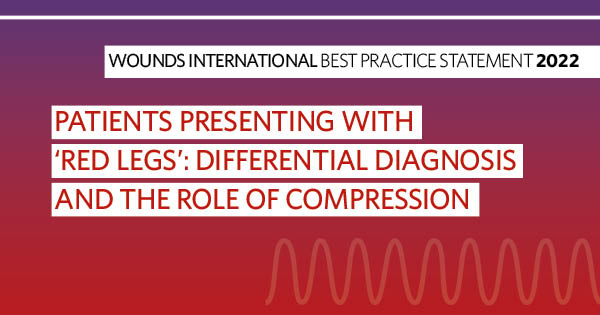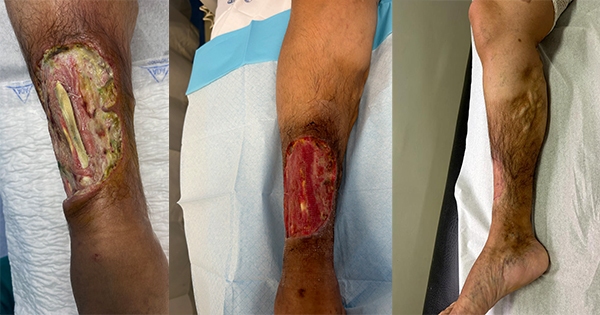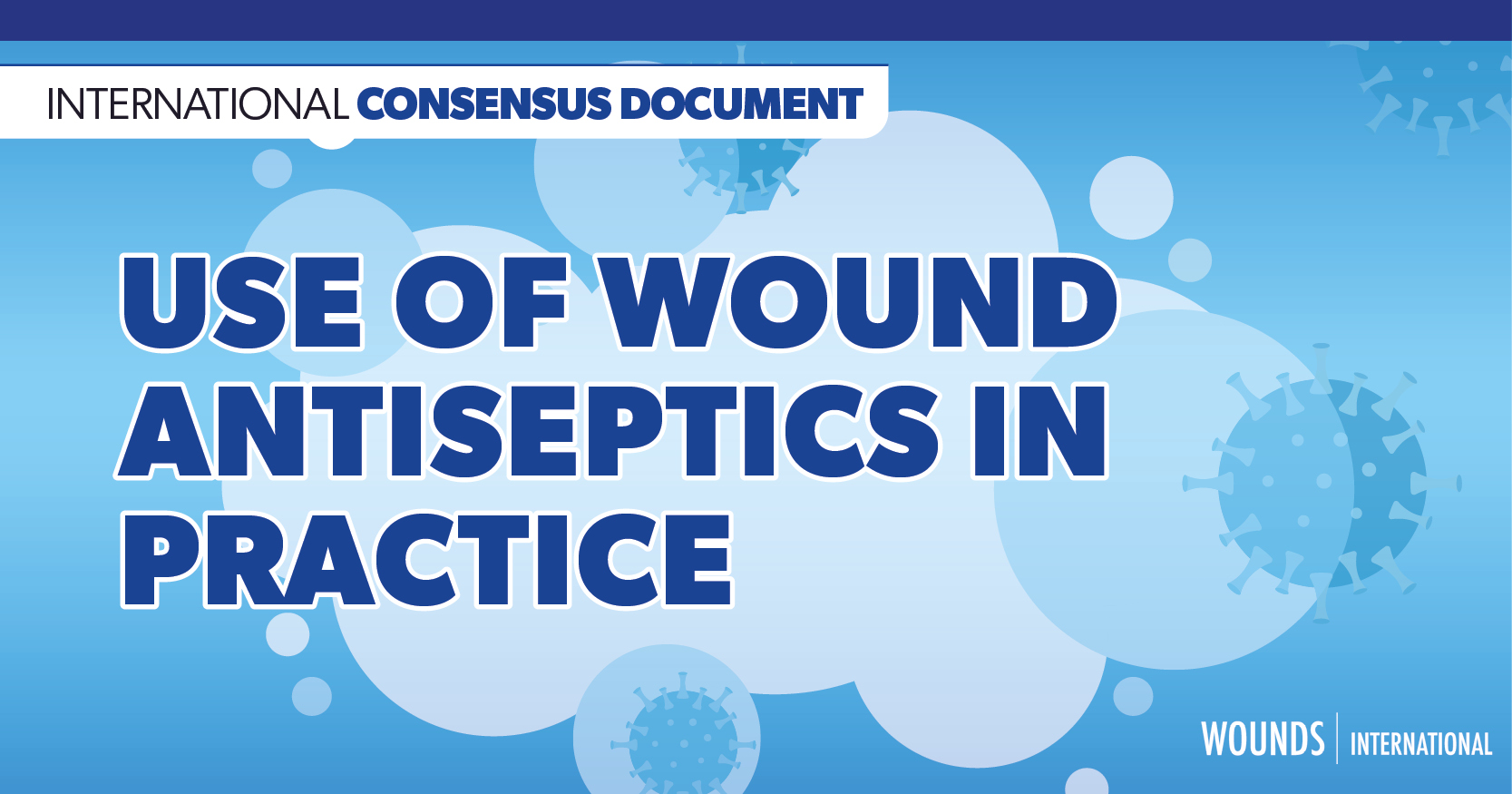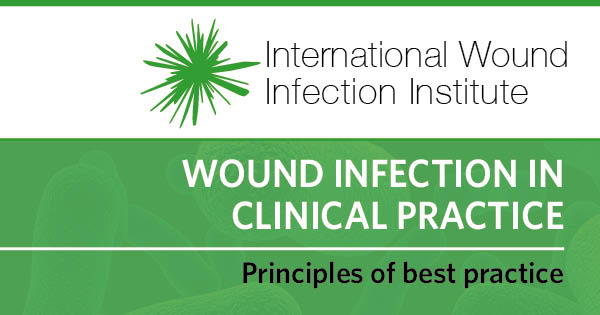Patients presenting with lower limb redness are often diagnosed with lower limb cellulitis and are frequently treated with antibiotic therapy. Cellulitis is a common condition presenting as an acute inflammation or redness of the skin and subcutaneous tissue, as a result of bacterial infection, hence the term ‘red legs’. Although infection causes inflammation, it is important to acknowledge that infection is not always the cause of inflammation. Other inflammatory skin conditions may result in ‘red legs’ presentations, thus causing confusion when making a differential diagnosis.
This is evidenced in the literature, with cellulitis misdiagnosis rates reported in circa 30% of patients (Patel et al, 2020), resulting in unnecessary hospital admissions, inappropriate antibiotic prescriptions, misdiagnosis and misuse of finite resources. It is an important clinical problem in an era of antimicrobial resistance (AMR), where appropriate diagnosis may circumvent misuse of antibiotics, in tandem with antimicrobial stewardship (AMS), and assist with managing finite healthcare resources through admission avoidance.
The purpose of this document is to provide the information necessary for clinicians to differentiate between infective and inflammatory lower limb conditions that frequently present as ‘red legs’, and to determine the appropriate treatment pathway for these conditions. The foundation is based on the premise of a complete holistic assessment; therefore, incidental findings, such as lower limb skin cancers, skin diseases, and acute issues, such as suspected deep venous thrombosis (DVT), necrotising fasciitis, and peripheral arterial disease will be briefly referenced with clinical descriptors (see Appendix 2). This will support the use of correct terminology required for appropriate referral to specialist services.
Finally, the role of compression therapy in the management of both inflammatory and infective skin conditions will be addressed, with emphasis on early application of compression therapy to circumvent adverse effects of non-compression, where appropriate. The evidence suggests that missed opportunities exist pertaining to early application of compression therapy (Guest et al, 2013). It is envisaged that reaching an accurate differential diagnosis will provide clinicians with the confidence to apply compression therapy sooner to optimise outcomes for patients by treating causative factors.
QR codes will be used throughout the document to provide links to other documents that are relevant to, or that support, this best practice document.
Further background to the document
Building on existing work, such as guidelines by the British Lymphology Society (BLS) in the UK (BLS, 2022), the ‘Red Leg Project’ evolved when issues were identified in clinical practice pertaining to accurate diagnosis of lower limb cellulitis and the ability to differentiate it from other causes. This is a well-recognised issue in clinical practice worldwide, which has sparked much debate between clinicians as to who is best placed to manage this condition. The challenge in practice is multifactorial: for example, clinicians may not have had clinical exposure to dermatological or vascular conditions, so they may not understand the causative factors contributing to lower limb skin conditions and complications.
Irrespective of this debate, lower limb redness resulting from infection, DVT or inflammatory skin conditions is a frequent presentation to general practitioners and to emergency departments worldwide. Poor or incorrect management can result in significant repeat presentations, overuse or misuse of antibiotics, and poorer patient experience and outcomes (Patel et al, 2020). There is published data pertaining to risk factors, lack of diagnostic criteria and management; however, there is a lack of information on patients’ experience and needs, or acknowledgement that clinicians may find lower limb cellulitis difficult to differentiate from other causes (Patel et al, 2020).
Further, the NHS in the UK has recognised that failure to manage lower limb conditions appropriately can lead to the development of wounds. Alarmingly, the numbers of non-traumatic lower limb amputations in non-diabetic patients are rising (Atkin et al, 2021). Diagnoses such as acute or chronic oedema in association with ‘red legs’ may be particularly complex as they have various clinical presentations at different stages (Patel et al, 2020). Patients may also present with concurrent issues, such as infection and inflammation, which may be challenging to differentiate. With no exact diagnostic tests available, clinical assessment is relied upon to reach a differential diagnosis.
To address these issues in Ireland, an expert group was established and the RATED (Rapid Assessment & Treatment in the Emergency Department) tool developed. The tool includes both descriptive and image criteria for the identification of infective (cellulitis), inflammatory (venous eczema, lipodermatosclerosis) and other common conditions such as DVT. Clinician feedback via anonymous questionnaire was positive (n=13), reporting the tool as user-friendly and helpful with differential diagnosis (O’Brien and White, 2021). Data has shown a sustained admission avoidance rates of 63% since inception of the tool (O’Brien and White, 2020). Work to further validate the tool, and to adapt it for clinicians internationally, is ongoing.







